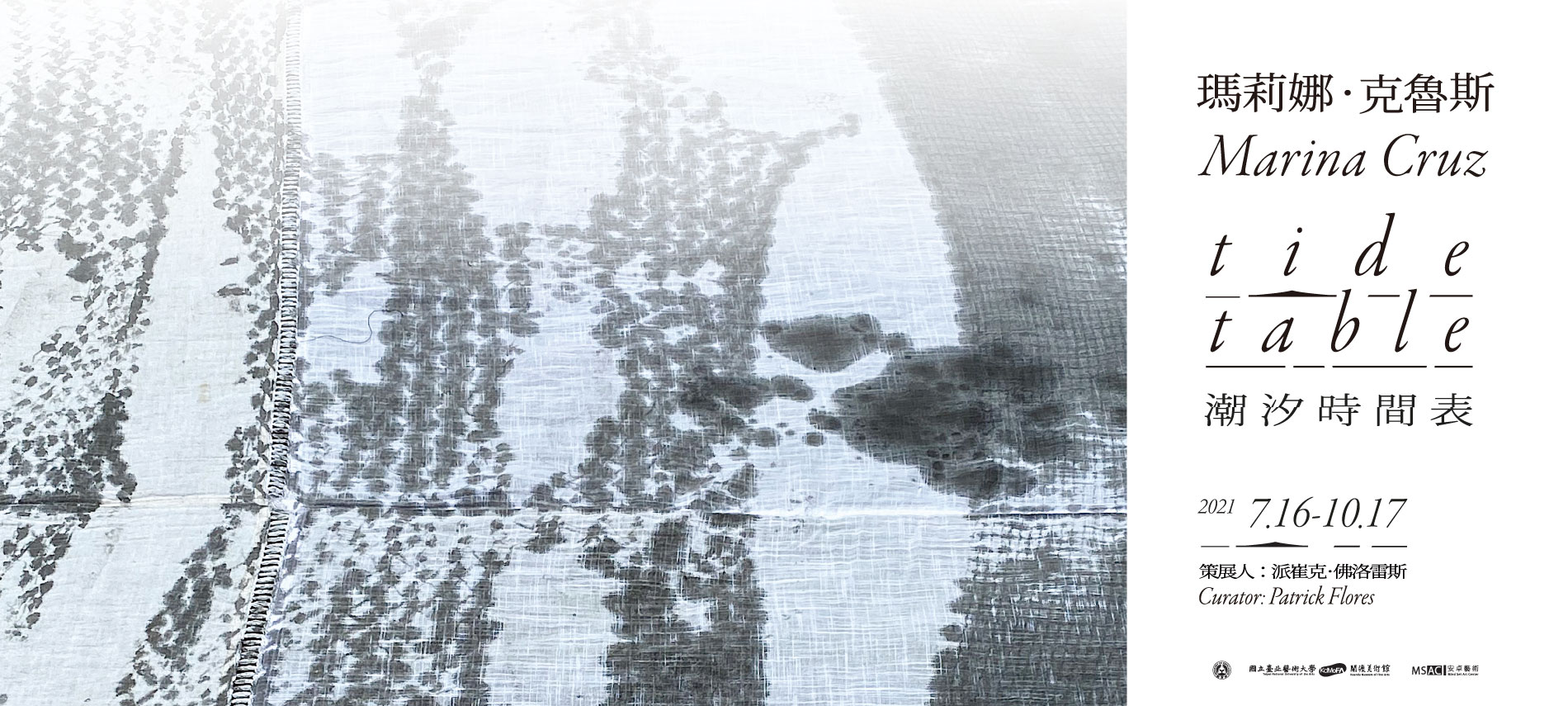Tide Table: Marina Cruz
Curated by Patrick Flores
The exhibition gathers vital pieces from the artistic practice of Philippine artist Marina Cruz. Her work across twenty years has sharply and poignantly evoked her personal history in relation to the biography of her residence in Bulacan, a province north of the capital of Manila. This intimate and sustained conversation on kin, abode, and the modes of remembering has led her to deepen the visual and material language of the recurring motifs of the dress, the dwelling, and family. Cruz elaborates on these tropes of historicized belonging across a range of appearances.
The house explores the interior that absorbs the social climate, which includes the elements like water and the coming and going of the members of the clan. The dress morphs into a portrait or a still life that is investigated for its details and worked on painstakingly with embroidery, which conjures the child, the daughter, the mother, the wife, the woman. This surface is also subjected to varied iterations in media and technique like the collagraph, the sculpture, the collage, the text, and the laminated photograph with long-hand annotation of both anecdote and dream. The image of face and object is likewise made to mingle with writing as a graphic effort in and of itself. In the portrait, the dress and the body find each other, with the latter clothed in the fabric of the generations. In the garden, the plant assumes presence, too, honored for its own growth even as its vulnerabilities are rendered delicately in the same vein. Cruz finally casts objects and presents them as miniatures, figurines, or replicas.
Formats are important in the artist’s corpus. The diptych, for instance, reveals the interface between attire, textile, and portrait. The large-scale painting takes in the granular aspects of fiber that ultimately becomes the human-size dress. Finally, the panoramic and the deep focus scenes propose a cinematic layer to the artist’s thoughtful weaving of her sensitive subjectivity and the melancholy of familiar history, attentive to routine and emergency.
Emblematic of this disposition is the tapestry of flood stains to which her family’s house has borne witness as if it were custom or culture but also crisis. She stitches the entries of this phenomenon on the tide chart, which is a distinct way of telling the timetable of nature and the vicissitudes of the human response. In the imagination of Cruz, this natural history is inscribed in the second skin of her clothes, the shelter of her lifeworld, which is also a quilt from the humble material for diapers.
The device of the tide table condenses Cruz’s concerns, as the word tide may mean the currents of nature or the cycles of history. It may reference the surge of water into weatherworn houses; or the wisdom of keeping track of its rise and fall in the form of a list or a diary. To measure it in a table is to risk a representation, to limn and to suture it, or to craft it as possession at once persistent and precarious.
In Marina Cruz’s works, both the method of display and the individual images operate simultaneously on several different levels. She is predisposed in each exhibition to use her diverse collection of antique, nominal, and semantic material in such a way as to bring into attention some characteristic of painterly representation. The astute presentational tactics; the devices of display and the source of her imagery; the recollection of events in her family history and the history of her depicted objects, pile the many layers in Marina Cruz that are waiting to be surfaced and understood. For this reason, notwithstanding her intentionally nostalgic use of old things and old lives, we suitably recognize Cruz’s practice as a meticulously contemporary one, primarily concerned with the conflicting nature of the painted object and the actual event behind it: the visibility and invisibility of its subject; the simultaneously physical and yet ethereal nature of the painted image. There’s a flair of a simultaneously tangible but untouchable presence felt in the photographs uncovered by Cruz and her grandmother from more than fifty years ago which serve as the source for her paintings. She deals with the stories of survival and recapture of the dresses of her twin mother and aunt which she summons in her exploration of the life and after-life that inhabits these objects. Her painting process, like one’s memory, is often faintly trailed, recognizable under her elusive lexis of portraiture.
Born 1982 in the Philippines, Marina Cruz graduated cum laude from the University of the Philippines. She was the Grand Prize Winner of the Philippine Art Awards and of the Philip Morris Awards in 2008. She was awarded the Asian Fellowship Grant by the Freeman Foundation Vermont Studio Art Center in the USA, and the Residency Grant by the La Trobe Visual Arts Center in Australia. In 2012, Cruz was named as one of the 13 Artists Awardees by the Cultural Center of the Philippines. She has taken part in numerous exhibitions in Taipei, Paris, Germany, and the Philippines, to name a few.
